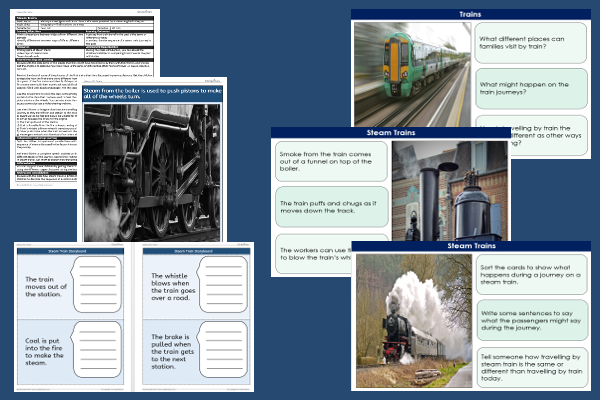Home > Key Stage One > History > Trains
Lesson Four – Steam Trains

This history teaching pack for Key Stage One gets the children to investigate, describe and record how trains carrying passengers and goods were powered and controlled by a steam engine in the past.
The class can select and sequence a set of example sentences to describe a and illustrate what it was like to travel as a passenger on a steam train in the past.
Download this teaching pack including a lesson plan, classroom activities and an interactive presentation to investigate, describe and record how trains carrying passengers and goods were powered and controlled by a steam engine in the past
Activities in this teaching pack include display posters to identify and describe how passengers travelled in steam trains in the past and a set of cards to sequence some of the special events that could have happened during a steam train journey made by passengers in the past.
The interactive presentation can be used to explore and record how trains were powered and controlled by a steam engine in the past.
This lesson is part of a history scheme of work to get the children to explore and illustrate how travel has changed since the past through the invention and development of trains from steam to electric technologies. There are teaching activities for shared learning, differentiated worksheets to support independent learning and interactive presentations to introduce concepts and key skills.
-

Maths Measurement Assessment
Assess abilities in estimating, measuring and comparing a range of different measurements for length, mass and capacity
-

Family Life
Investigate and reflect on some of the special events and experiences that might happen in the life of a family
-

Final Sounds Word Guess
Practise playing some guessing and matching games to identify the spelling and meaning of words with different final sounds
-

Building Reports
Explore how to collect facts and information to work with when composing and presenting non-chronological reports about buildings that can be found in the local area
